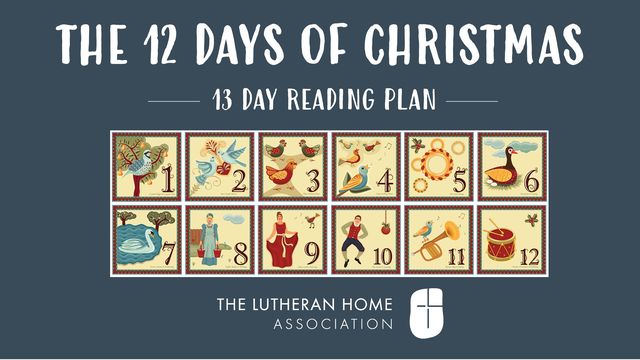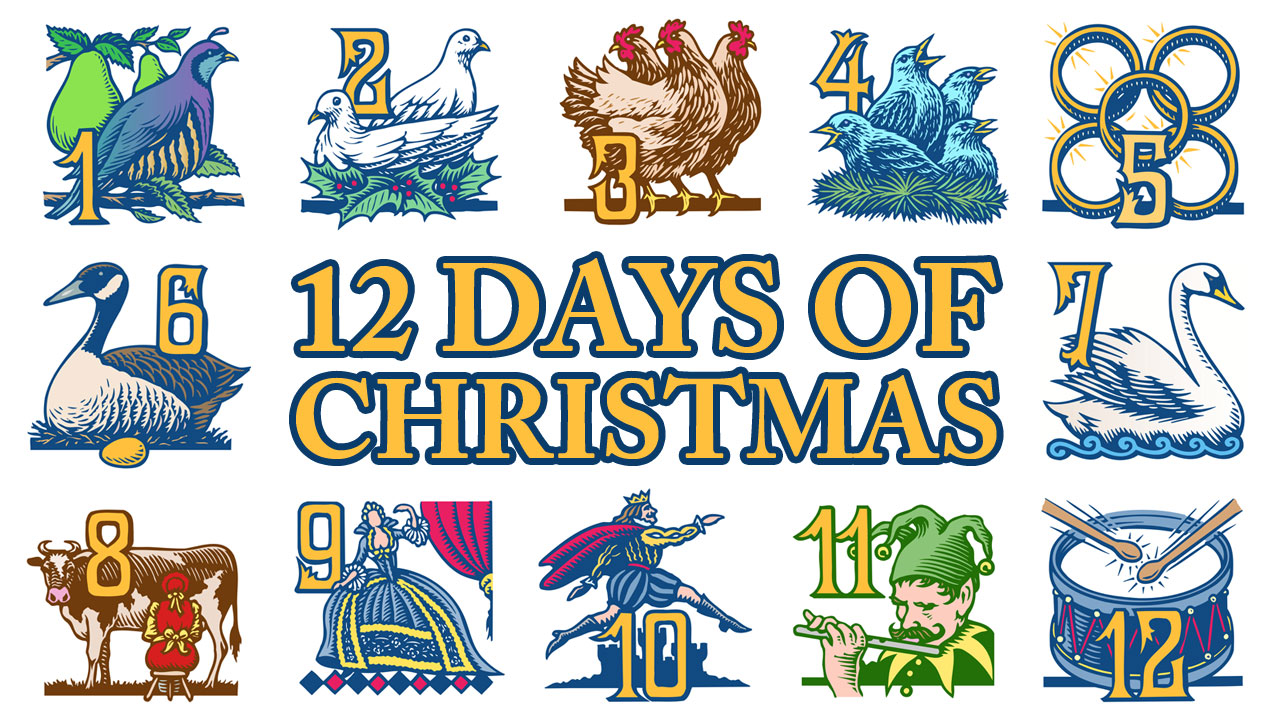The Twelve Days of Christmas: A Biblical Reflection
Related Articles: The Twelve Days of Christmas: A Biblical Reflection
- Verse 1
- 100 Best Christmas Songs Of All Time
- 1 Day Until Christmas: Unwrapping The Merriment With Festive Activities For 2024
- Capture The Magic Of Christmas With Enchanting 10 X 20 Christmas Backdrops For Pictures 2024
- 10 Unforgettable Christmas Gift Ideas For 10-Year-Olds In 2024
Introduction
With great pleasure, we will explore the intriguing topic related to The Twelve Days of Christmas: A Biblical Reflection. Let’s weave interesting information and offer fresh perspectives to the readers.
Table of Content
Video about The Twelve Days of Christmas: A Biblical Reflection
The Twelve Days of Christmas: A Biblical Reflection

The Twelve Days of Christmas, a beloved holiday tradition, is a time of joy, celebration, and reflection. It begins on Christmas Day and ends on the Feast of the Epiphany, January 6th. Each day of the twelve-day period is associated with a different gift, as described in the popular carol. However, beyond the festive imagery, the Twelve Days of Christmas hold profound biblical significance.
Day 1: A Partridge in a Pear Tree (Luke 2:8-14)
On the first day, we are presented with "a partridge in a pear tree." This image evokes the humble origins of Jesus’ birth. Shepherds, who were considered outcasts in Jewish society, were the first to receive the news of Jesus’ birth from an angel. They found the newborn baby in a manger, a feeding trough for animals, in the town of Bethlehem.
Day 2: Two Turtle Doves (Song of Solomon 2:12)
The second day brings "two turtle doves." Turtle doves were used as a symbol of love and fidelity in ancient Israel. They were often offered as sacrifices in the temple, and their cooing was associated with the coming of spring. In the context of the Twelve Days of Christmas, the two turtle doves may represent the love between Mary and Joseph, or the love between God and humanity.
Day 3: Three French Hens (Matthew 25:31-40)
On the third day, we have "three French hens." Hens are known for their nurturing and protective instincts. In the Bible, Jesus often used the image of a hen gathering her chicks under her wings to describe his love and protection for his followers.
Day 4: Four Calling Birds (Revelation 4:6-8)
The fourth day introduces "four calling birds." In the Bible, birds are often used as symbols of freedom, hope, and the presence of God. The four calling birds may represent the four Gospels, which proclaim the good news of Jesus’ life, death, and resurrection.
Day 5: Five Golden Rings (Genesis 41:42)
On the fifth day, we receive "five golden rings." Rings are often used as symbols of authority, power, and commitment. The five golden rings may represent the five books of the Torah, the foundational texts of Judaism and Christianity.
Day 6: Six Geese A-Laying (Luke 2:22-38)
The sixth day brings "six geese a-laying." Geese are known for their loyalty and teamwork. In the Bible, the number six often represents imperfection or incompleteness. The six geese may represent the six days of creation before God rested on the seventh day.
Day 7: Seven Swans A-Swimming (John 7:37-39)
On the seventh day, we have "seven swans a-swimming." Swans are known for their grace, beauty, and purity. In the Bible, the number seven often represents completeness or perfection. The seven swans may represent the seven days of creation, the seven sacraments of the Church, or the seven virtues.
Day 8: Eight Maids A-Milking (Luke 1:26-38)
The eighth day introduces "eight maids a-milking." Milk is often used as a symbol of nourishment and sustenance. In the Bible, Jesus is referred to as the "bread of life" and the "living water." The eight maids a-milking may represent the nourishment and sustenance we receive from God.
Day 9: Nine Ladies Dancing (Matthew 5:1-12)
On the ninth day, we have "nine ladies dancing." Dancing is often used as a symbol of joy, celebration, and worship. In the Bible, David danced before the Ark of the Covenant, and the Israelites danced after crossing the Red Sea. The nine ladies dancing may represent the joy and celebration we experience in God’s presence.
Day 10: Ten Lords A-Leaping (Luke 19:28-40)
The tenth day brings "ten lords a-leaping." Lords are often associated with authority and power. The ten lords a-leaping may represent the ten commandments, the ten plagues of Egypt, or the ten tribes of Israel.
Day 11: Eleven Pipers Piping (Matthew 2:1-12)
On the eleventh day, we have "eleven pipers piping." Pipers are musicians who play wind instruments. In the Bible, music is often used to express joy, praise, and worship. The eleven pipers piping may represent the different ways we can worship and glorify God.
Day 12: Twelve Drummers Drumming (Revelation 12:1-6)
The twelfth and final day of Christmas brings "twelve drummers drumming." Drums are often used to create a sense of excitement and anticipation. In the Bible, the sound of trumpets and drums is often associated with the coming of the Lord. The twelve drummers drumming may represent the anticipation of Jesus’ return.
The Epiphany: A Time of Revelation
The Twelve Days of Christmas culminate in the Feast of the Epiphany, which celebrates the revelation of Jesus Christ to the world. The word "epiphany" means "manifestation" or "revelation." On this day, we remember how God revealed his Son to the Magi, the wise men from the East.
The Epiphany is a time to reflect on the ways in which God continues to reveal himself to us today. We may encounter God in the beauty of nature, in the love of others, or in the stillness of our own hearts. As we celebrate the Twelve Days of Christmas, let us open our hearts to the revelation of God’s love and presence in our lives.








Closure
Thus, we hope this article has provided valuable insights into The Twelve Days of Christmas: A Biblical Reflection. We appreciate your attention to our article. See you in our next article!